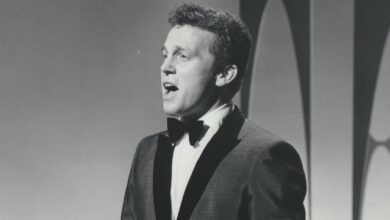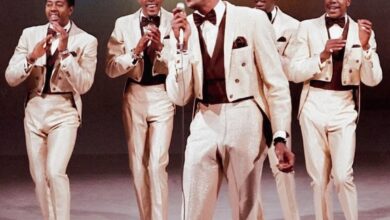Bobby Goldsboro’s “Honey” – The Heartfelt Ballad That Defined A Generation
In the tapestry of 1960s music, few songs evoke as profound an emotional response as Bobby Goldsboro’s 1968 hit, “Honey.” This poignant ballad tells the story of a man reflecting on his late wife, capturing the hearts of listeners worldwide and cementing its place in music history.
Born on January 18, 1941, in Marianna, Florida, Bobby Goldsboro’s musical journey began in his youth. He developed a passion for the guitar, which led him to join local bands during his high school years. His talent soon caught the attention of the legendary Roy Orbison, and Goldsboro became a guitarist in Orbison’s backing band, The Webbs. This experience provided him with invaluable exposure and set the stage for his solo career.
In 1964, Goldsboro ventured into a solo career, releasing “See the Funny Little Clown,” a self-penned tune that reached number nine on the U.S. charts. This success was a harbinger of greater achievements to come, showcasing his knack for storytelling through music.
The song “Honey” was penned by songwriter Bobby Russell, who had initially recorded it himself. However, it was Goldsboro’s heartfelt rendition that resonated with audiences. Recorded in a single take on January 30, 1968, at RCA Studio B in Nashville, the simplicity and sincerity of the performance amplified its emotional impact.
Upon its release, “Honey” quickly ascended the charts, reaching number one on the Billboard Hot 100, where it remained for five consecutive weeks. Its success wasn’t confined to the United States; the song also topped charts in Australia and peaked at number two in the United Kingdom. By the end of 1968, “Honey” was recognized as the year’s best-selling record globally.
The narrative of “Honey” revolves around a man’s reminiscences of his deceased wife, reflecting on moments of joy and sorrow. The lyrics paint vivid pictures of their life together, from planting a tree to shared laughter and tears. This storytelling approach struck a chord with listeners, offering a blend of nostalgia and melancholy that was both relatable and touching.
While “Honey” garnered immense popularity, it also faced its share of criticism. Some detractors labeled it as overly sentimental or “schmaltzy.” Despite this, the song’s emotional resonance ensured its enduring appeal, and it remains a staple on oldies radio stations and in nostalgic music collections.
The success of “Honey” had a profound impact on Goldsboro’s career. It led to numerous television appearances and even his own syndicated show, “The Bobby Goldsboro Show,” which aired from 1973 to 1976. Beyond “Honey,” Goldsboro continued to produce hits like “Watching Scotty Grow” and “Summer (The First Time),” further establishing his place in the music industry.
Beyond his singing career, Goldsboro showcased versatility as an artist. He ventured into television production, creating children’s programs such as “The Swamp Critters of Lost Lagoon,” where he not only produced but also voiced characters and composed music. His talents extended to oil painting, adding yet another dimension to his artistic repertoire.
The influence of “Honey” extended beyond Goldsboro’s own performances. The song was covered by various artists, each bringing their unique interpretation to the poignant ballad. Notably, O.C. Smith’s 1969 rendition reached number 44 on the pop chart, while Andy Williams included his version on a 1968 album. These covers contributed to the song’s enduring legacy and showcased its versatility across different musical styles.
The song’s composer, Bobby Russell, was a notable figure in the music industry, having written other hits like “Little Green Apples” and “The Night the Lights Went Out in Georgia.” His songwriting prowess was evident in the way “Honey” captured complex emotions with simple yet evocative lyrics.
Reflecting on its legacy, “Honey” stands as a testament to the power of storytelling in music. Its blend of narrative depth and melodic simplicity allows it to transcend generations, continuing to evoke emotions in listeners decades after its release.
In the broader context of 1960s music, “Honey” exemplifies the era’s penchant for emotionally charged ballads that tell a story. Its success paved the way for other narrative-driven songs, influencing songwriters to explore personal and poignant themes in their work.
Today, “Honey” remains a significant piece of musical history. Its enduring popularity is a testament to its universal themes of love, loss, and remembrance. For many, the song serves as a poignant reminder of the fleeting nature of life and the importance of cherishing moments with loved ones.
Bobby Goldsboro’s “Honey” is more than just a song; it’s a narrative that continues to resonate, a melody that lingers in the hearts of those who listen. Its place in the annals of music history is well-deserved, standing as a timeless reminder of the power of song to capture the human experience.



